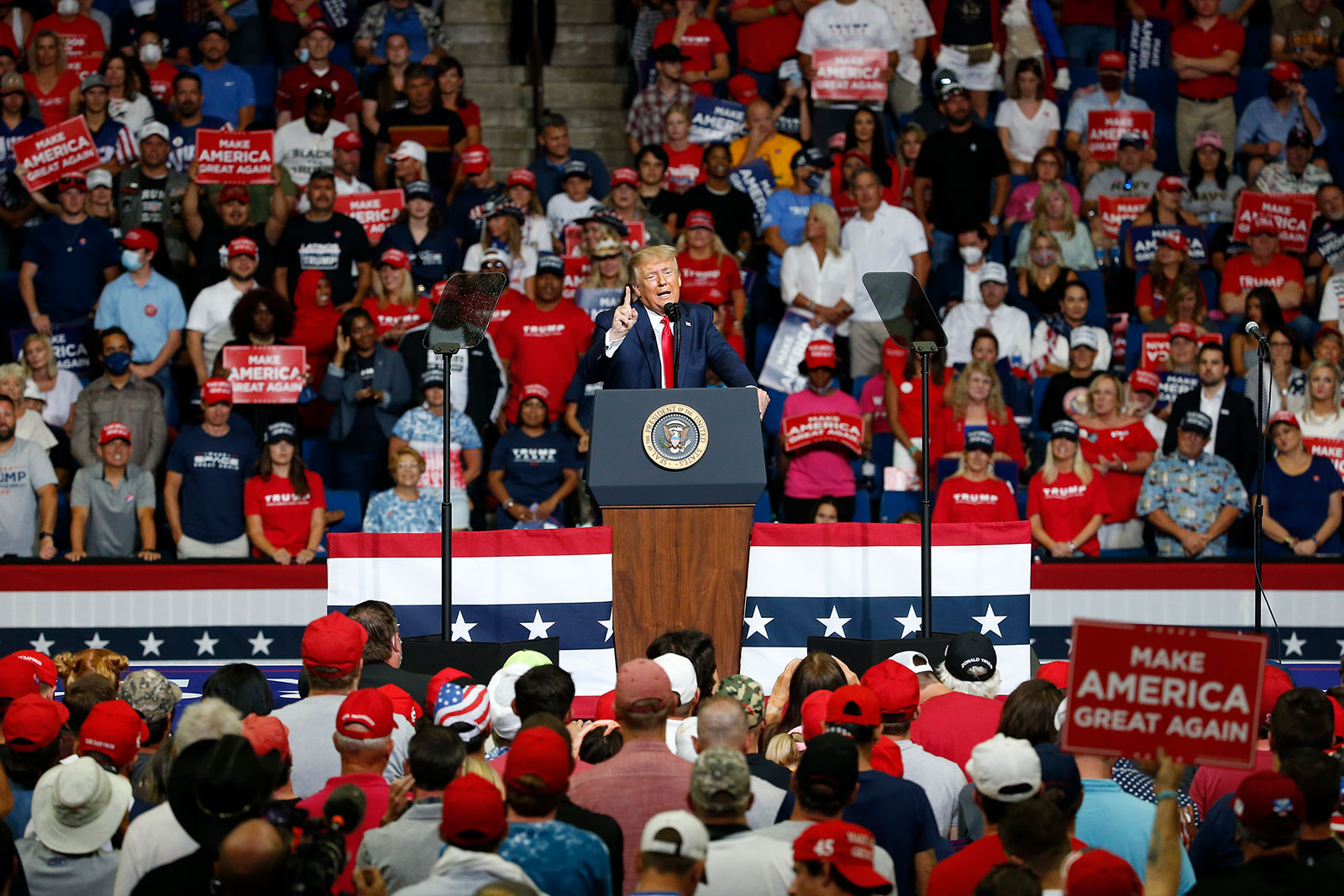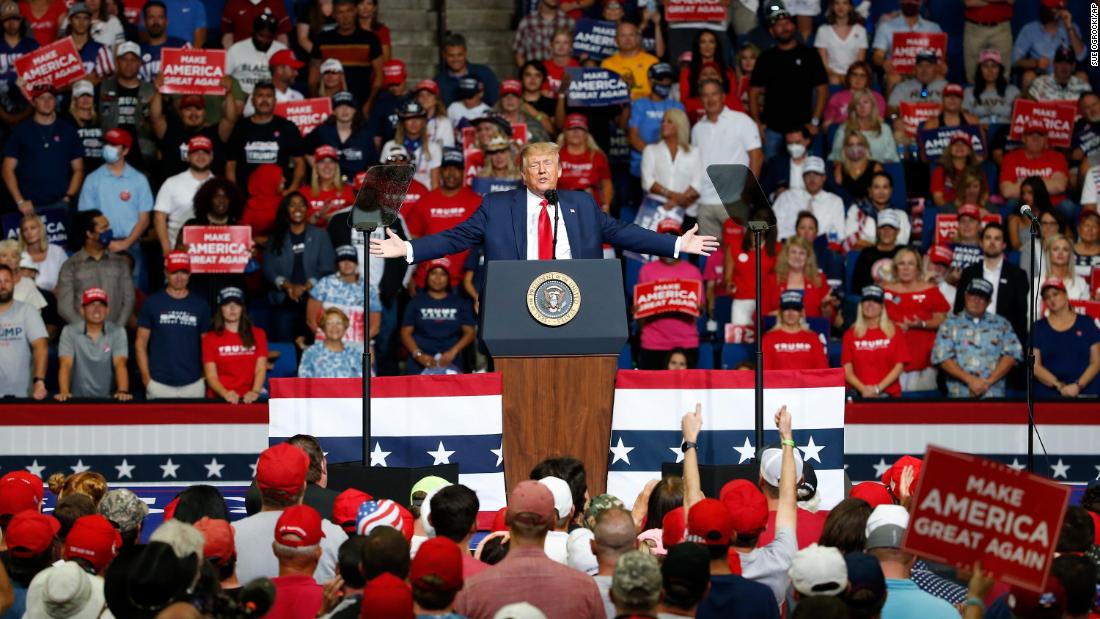The President slammed movements across the country looking to remove or replace monuments honoring Confederate generals

Trump said he shut down the United States to “all people from China” and later, “closed it down to Europe.”
Facts First: Trump was exaggerating or speaking too broadly. Trump never imposed a complete “ban” on European nationals or people traveling from Europe. Rather, he imposed restrictions on travel from most European countries – but exempted other European countries. Furthermore, the travel restriction policy his administration announced January 31, which took effect February 2, was not a complete ban on China or a total border closure.
It prohibited most people who had been in China in the previous 14 days from entering the US, but it made significant exceptions – for not only US citizens but permanent residents, many of the family members of citizens and permanent residents, and some other groups of people. The New York Times reported April 4 that nearly 40,000 people had flown to the US from China since the restrictions went into effect in early February.
And his restrictions on Europe did not apply to some people traveling from there: US citizens, permanent US residents, certain family members of both citizens and permanent residents, and some other groups of travelers. Trump’s restrictions initially applied to the 26 countries in the Schengen Area, a European zone in which people can move freely across internal borders without being subjected to border checks. Trump later added the United Kingdom and Ireland. That still left out some European countries, including Croatia, Serbia, Romania, Ukraine and Russia.
![]()


